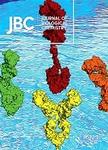版权所有:内蒙古大学图书馆 技术提供:维普资讯• 智图
内蒙古自治区呼和浩特市赛罕区大学西街235号 邮编: 010021

作者机构:Univ Alabama Birmingham Comprehens Diabet Ctr 1825 Univ BlvdSHEL 1206 Birmingham AL 35294 USA Univ Alabama Birmingham Dept Med Div Endocrinol Diabet & Metab 1825 Univ BlvdSHEL 1206 Birmingham AL 35294 USA
出 版 物:《JOURNAL OF BIOLOGICAL CHEMISTRY》 (生物化学杂志)
年 卷 期:2016年第291卷第16期
页 面:8428-8439页
核心收录:
学科分类:0710[理学-生物学] 071010[理学-生物化学与分子生物学] 07[理学]
基 金:National Institutes of Health [R01DK-078752, UC4DK104204] JDRF [3-SRA-2014-302-M-R]
主 题:beta cell (B-cell) cytokine microRNA (miRNA) pancreatic islet type 1 diabetes TXNIP
摘 要:Thioredoxin-interacting protein (TXNIP) is a key regulator of diabetic beta-cell apoptosis and dysfunction, and TXNIP inhibition prevents diabetes in mouse models of type 1 and type 2 diabetes. Although we have previously shown that TXNIP is strongly induced by glucose, any regulation by the proinflammatory cytokines tumor necrosis factor alpha (TNF alpha), interleukin-1 beta (IL-1 beta), and interferon gamma (IFN gamma) has remained largely unexplored. Moreover, even though this three-cytokine mixture is widely used to mimic type 1 diabetes in vitro, the mechanisms involved are not fully understood. Interestingly, we have now found that this cytokine mixture increases beta-cell TXNIP expression;however, although TNF alpha had no effect, IL-1 beta surprisingly down-regulated TXNIP transcription, whereas IFN gamma increased TXNIP levels in INS-1 beta-cells and primary islets. Human TXNIP promoter analyses and chromatin immunoprecipitation studies revealed that the IL-1 beta effect was mediated by inhibition of carbohydrate response element binding protein activity. In contrast, IFN gamma increased pro-apoptotic TXNIP post-transcriptionally via induction of endoplasmic reticulum stress, activation of inositol-requiring enzyme 1 alpha (IRE1 alpha), and suppression of miR-17, a microRNA that targets and down-regulates TXNIP. In fact, miR-17 knockdown was able to mimic the IFN gamma effects on TXNIP, whereas miR-17 overexpression blunted the cytokine effect. Thus, our results demonstrate for the first time that the proinflammatory cytokines TNF alpha, IL-1 beta, and IFN gamma each have distinct and in part opposing effects on beta-cell TXNIP expression. These findings thereby provide new mechanistic insight into the regulation of TXNIP and beta-cell biology and reveal novel links between proinflammatory cytokines, carbohydrate response element binding protein-mediated transcription, and microRNA signaling.